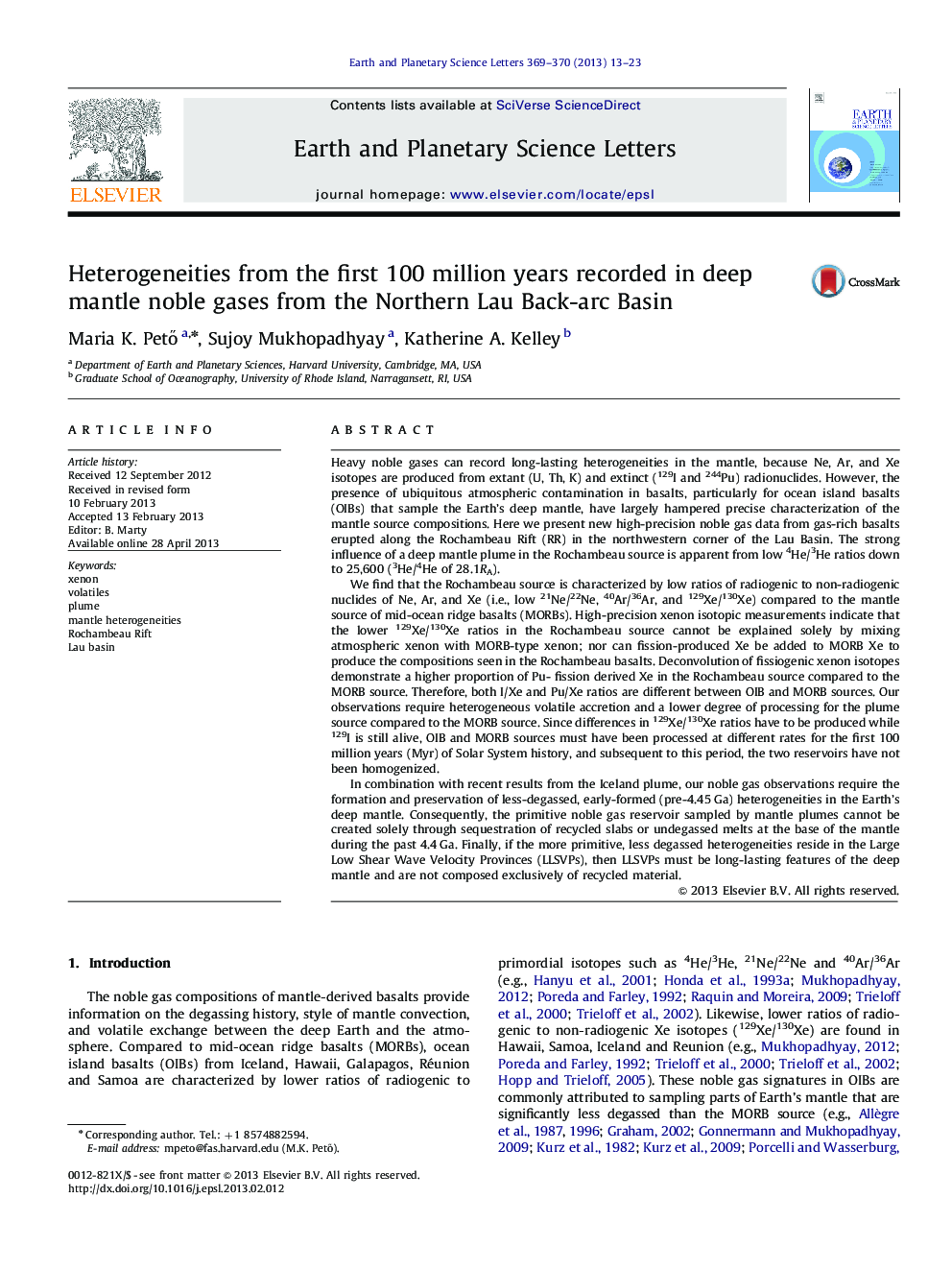| کد مقاله | کد نشریه | سال انتشار | مقاله انگلیسی | نسخه تمام متن |
|---|---|---|---|---|
| 4677088 | 1634784 | 2013 | 11 صفحه PDF | دانلود رایگان |
Heavy noble gases can record long-lasting heterogeneities in the mantle, because Ne, Ar, and Xe isotopes are produced from extant (U, Th, K) and extinct (129I and 244Pu) radionuclides. However, the presence of ubiquitous atmospheric contamination in basalts, particularly for ocean island basalts (OIBs) that sample the Earth's deep mantle, have largely hampered precise characterization of the mantle source compositions. Here we present new high-precision noble gas data from gas-rich basalts erupted along the Rochambeau Rift (RR) in the northwestern corner of the Lau Basin. The strong influence of a deep mantle plume in the Rochambeau source is apparent from low 4He/3He ratios down to 25,600 (3He/4He of 28.1RA).We find that the Rochambeau source is characterized by low ratios of radiogenic to non-radiogenic nuclides of Ne, Ar, and Xe (i.e., low 21Ne/22Ne, 40Ar/36Ar, and 129Xe/130Xe) compared to the mantle source of mid-ocean ridge basalts (MORBs). High-precision xenon isotopic measurements indicate that the lower 129Xe/130Xe ratios in the Rochambeau source cannot be explained solely by mixing atmospheric xenon with MORB-type xenon; nor can fission-produced Xe be added to MORB Xe to produce the compositions seen in the Rochambeau basalts. Deconvolution of fissiogenic xenon isotopes demonstrate a higher proportion of Pu- fission derived Xe in the Rochambeau source compared to the MORB source. Therefore, both I/Xe and Pu/Xe ratios are different between OIB and MORB sources. Our observations require heterogeneous volatile accretion and a lower degree of processing for the plume source compared to the MORB source. Since differences in 129Xe/130Xe ratios have to be produced while 129I is still alive, OIB and MORB sources must have been processed at different rates for the first 100 million years (Myr) of Solar System history, and subsequent to this period, the two reservoirs have not been homogenized.In combination with recent results from the Iceland plume, our noble gas observations require the formation and preservation of less-degassed, early-formed (pre-4.45 Ga) heterogeneities in the Earth's deep mantle. Consequently, the primitive noble gas reservoir sampled by mantle plumes cannot be created solely through sequestration of recycled slabs or undegassed melts at the base of the mantle during the past 4.4 Ga. Finally, if the more primitive, less degassed heterogeneities reside in the Large Low Shear Wave Velocity Provinces (LLSVPs), then LLSVPs must be long-lasting features of the deep mantle and are not composed exclusively of recycled material.
► He, Ne, Ar, Xe isotopes measured in high 3He/4He plume influenced Lau Basin lavas.
► He–Ar–Xe systematics similar to those observed at Iceland plume.
► Plume source has higher Pu/U and lower I/Pu ratio relative to the MORB source.
► Xe from both recycled and relatively undegassed material is present in plume sources.
► Relatively undegassed component in the plume source has been preserved since 4.45 Ga.
Journal: Earth and Planetary Science Letters - Volumes 369–370, May 2013, Pages 13–23
